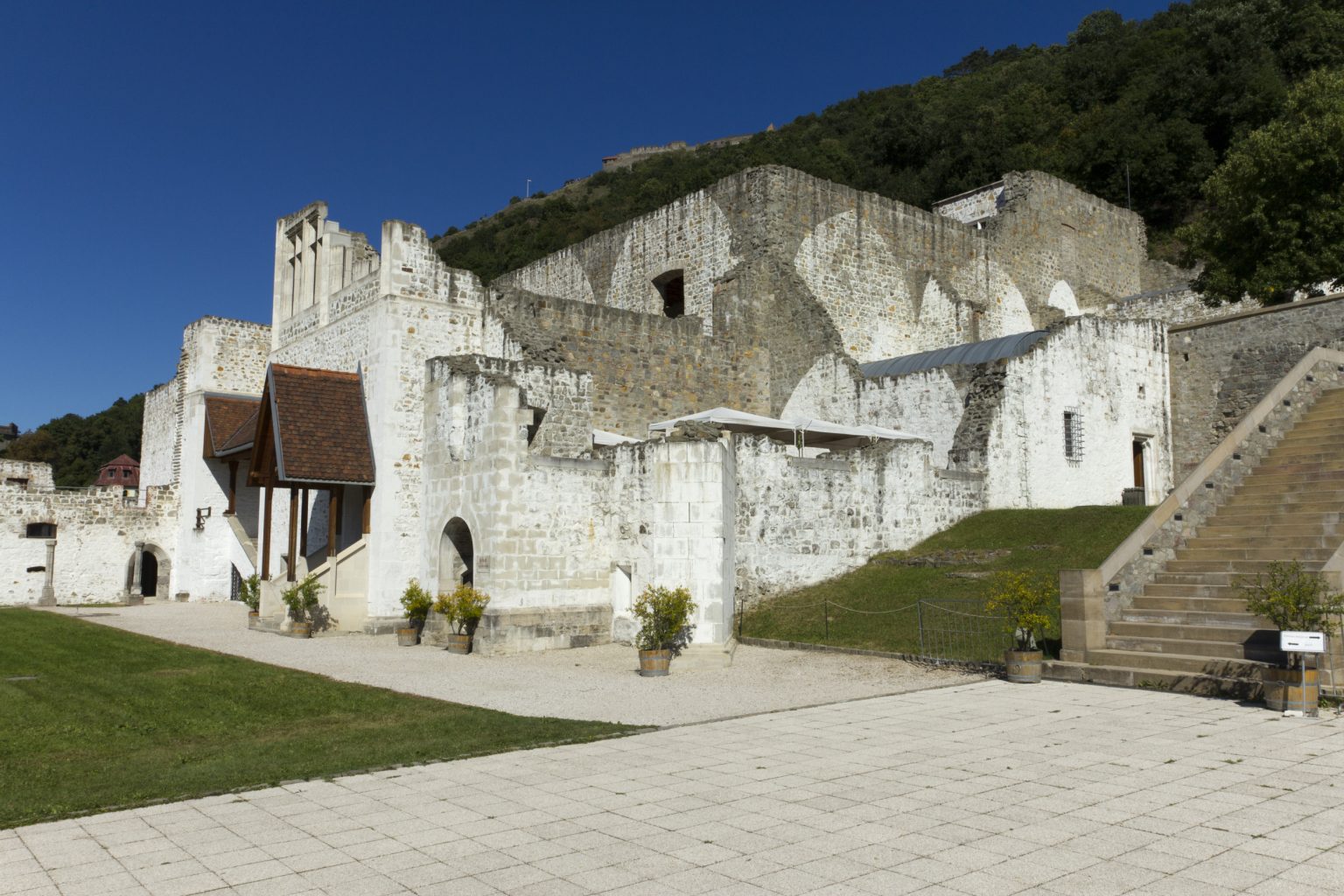Archaeologists have recently discovered the remains of a lost medieval church near a medieval royal palace in the town of Visegrád, Hungary. The church was part of a former Franciscan monastery founded by King Sigismund in A.D. 1425. The monastery was located next to the palace ruins and was dedicated to the Church of the Virgin Mary. Excavations at the site revealed the sanctuary and high altar of the church, as well as a large crypt in front of the main altar where skeletal remains of three individuals were found. The presence of lead rifle bullets and a copper bowl with weapon indentations suggests that the church may have been used for defensive purposes and may have been the scene of a bloody confrontation.
The monastery at Visegrád was founded by King Sigismund, who reigned as king of Hungary starting in 1387 and was later crowned Holy Roman Emperor in 1433. The Holy Roman Empire was a confederation of numerous political entities in Europe that lasted for about 1,000 years until its dissolution in 1806. The monastery and church at Visegrád were established during a time of great political and social upheaval in Europe, and the remains found at the site provide insight into the history and use of the church during this period. The discovery of the skeletal remains and artifacts at the site suggests that the church may have been used for purposes beyond religious worship and may have played a role in defensive actions during times of conflict.
Further excavations at the site may reveal more about the history of the lost church and its connection to the medieval royal palace at Visegrád. The evidence found so far indicates that the church may have been looted and possibly destroyed during the Ottoman Empire’s control of Visegrád in the 16th century. The Ottoman Empire, which was established by Turkish tribes in Anatolia, was one of the most powerful states in the world during the 15th and 16th centuries, extending its influence over southeastern Europe, North Africa, and the Middle East. The presence of lead rifle bullets and weapon indentations on the copper bowl suggest that the church may have been a site of conflict during this period.
The discovery of the lost medieval church at Visegrád sheds light on the history and archaeology of the region, providing valuable insights into the religious, political, and social aspects of medieval Europe. The remains of the church and monastery offer a glimpse into the daily life and activities of the people who lived and worked in the area during the 15th and 16th centuries. The ongoing excavations at the site will continue to uncover more information about the church’s history and its role in the surrounding community, contributing to our understanding of the past and the complex interactions between different cultures and empires in medieval Europe.
The archaeological findings at Visegrád also highlight the importance of preserving and studying historical sites to uncover the secrets of the past. The remains of the lost church and monastery provide a tangible connection to the people and events that shaped the region’s history, offering a unique perspective on the cultural and religious practices of the time. By delving into the mysteries of the past, archaeologists and historians can piece together the stories of those who came before us, shedding light on the forgotten chapters of our shared human experience.
As the excavations continue at Visegrád, researchers will have the opportunity to unravel more mysteries and uncover the hidden treasures buried beneath the earth. The discovery of the lost medieval church is just the beginning of a journey into the past, where each artifact and skeleton tells a story of life and death in a tumultuous time. By piecing together the fragments of history, we can gain a better understanding of the challenges and triumphs faced by those who lived in Visegrád centuries ago, enriching our knowledge of the past and our appreciation for the enduring legacy of the medieval world.


